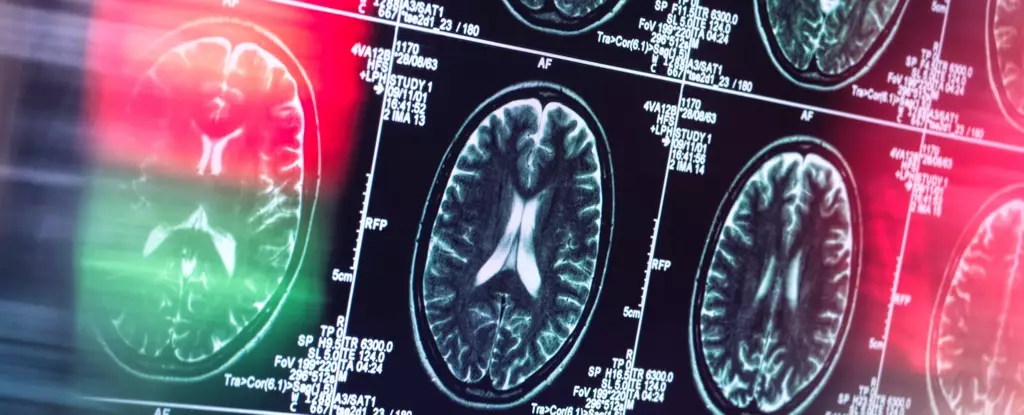The quest for an effective treatment and eventual cure for Alzheimer’s disease has become a battleground of scientific innovation and ethical dilemmas. As the understanding of this complex affliction evolves, the implications of past research and current methodologies are now under scrutiny. This article explores recent controversies in Alzheimer’s research, critiques established paradigms, and encourages the exploration of novel theories that may provide hope for millions affected by this devastating condition.
The journey to uncover a cure for Alzheimer’s has faced notable setbacks, especially surrounding clinical trials and the integrity of foundational studies. In a striking revelation by Science magazine in July 2022, a pivotal 2006 research paper published in Nature came under fire for potentially utilizing fabricated data to support the beta-amyloid hypothesis. This hypothesis has long positioned beta-amyloid plaques as the primary culprit behind Alzheimer’s disease. Just a year prior, in June 2021, the U.S. Food and Drug Administration (FDA) controversially approved aducanumab, an antibody that targets these protein accumulations. However, the approval came despite incomplete and contradictory data, further straining the relationship between scientific rigor and regulatory practices.
Dissent among the medical community remains pronounced. Some clinicians argue that aducanumab’s approval heralds a groundbreaking advance for patients, while others condemn its release as premature, emphasizing the paramount need for robust evidence before a drug can receive approval. This discord highlights an essential question: how did the scientific community find itself mired in confusion in the face of a condition that impacts millions?
Challenging the Conventional Dogma
For years, research efforts have focused almost exclusively on the beta-amyloid hypothesis, often neglecting alternative perspectives. Scholars have become entrenched in a cycle of studying beta-amyloid without exploring other underlying mechanisms that could be pivotal in understanding Alzheimer’s. This over-reliance on one hypothesis may have stifled innovation in treatment strategies.
In light of this, researchers, such as those at the Krembil Brain Institute in Toronto, are urging a shift from traditional paradigms to fresh interpretations of Alzheimer’s. They propose conceptualizing the disease not merely as a neurodegenerative disorder, but predominantly as an autoimmune condition rooted in the brain’s immune response. This radical approach suggests that beta-amyloid acts as part of the brain’s natural immune defense rather than a pathological agent. The intertwining roles of immune function and Alzheimer’s demand that scientists reassess the protein’s function within the broader context of neuroinflammation and immunity, reshaping the direction of future research.
The innovative perspective posits that when the brain experiences injury or encounters invaders, the immune system activates, which includes beta-amyloid’s involvement as a defense mechanism. However, due to structural similarities between brain cells and bacterial membranes, this response may inadvertently lead to a harmful autoimmune attack on healthy neurons. Recognizing Alzheimer’s as an autoimmune disorder opens new avenues for therapeutic exploration, calling for investigations into immune-regulating pathways that, if properly manipulated, could potentially stave off neuronal damage.
Although traditional autoimmune treatments may not be applicable within the brain’s intricacies, targeting alternative regulatory mechanisms within the immune system could yield breakthroughs. This shift in understanding is paramount, especially as the global burden of dementia, affecting over 50 million people, continues to escalate.
The Expanding Horizon of Theoretical Frameworks
While the autoimmune hypothesis introduces a compelling narrative, it is far from the only new conceptual model gaining traction. Researchers are actively investigating various factors that could contribute to Alzheimer’s pathology. Among them are mitochondrial dysfunction, which focuses on the cellular energy factories and how their failure might influence cognitive function; the role of oral bacteria and their migratory potential into the brain; and abnormalities in metal handling, such as toxicity from mismanaged zinc or iron within neural tissues.
The emergence of these theories signals a shift towards a more holistic understanding of Alzheimer’s, representing an exciting new chapter filled with possibilities. With dementia diagnoses surging at a staggering frequency, it is critical that ongoing research challenges established concepts while incorporating multidisciplinary approaches.
The challenges associated with Alzheimer’s disease necessitate an urgent reevaluation of established practices in research and treatment. With the Alzheimer’s crisis looming large, the need for innovative ideas and pioneering hypotheses has never been greater. As scientists and clinicians alike seek to comprehend the multifaceted nature of this disease, it is vital to adopt diverse approaches that consider the interplay of immune responses, cellular health, and environmental factors. By embracing a shift towards a more integrated understanding of Alzheimer’s, the medical community can hopefully unlock solutions that will profoundly impact billions living with the disease. This is not just an academic pursuit; it is an imperative for the well-being of individuals and families around the world battling the unseen enemy of dementia.


Leave a Reply